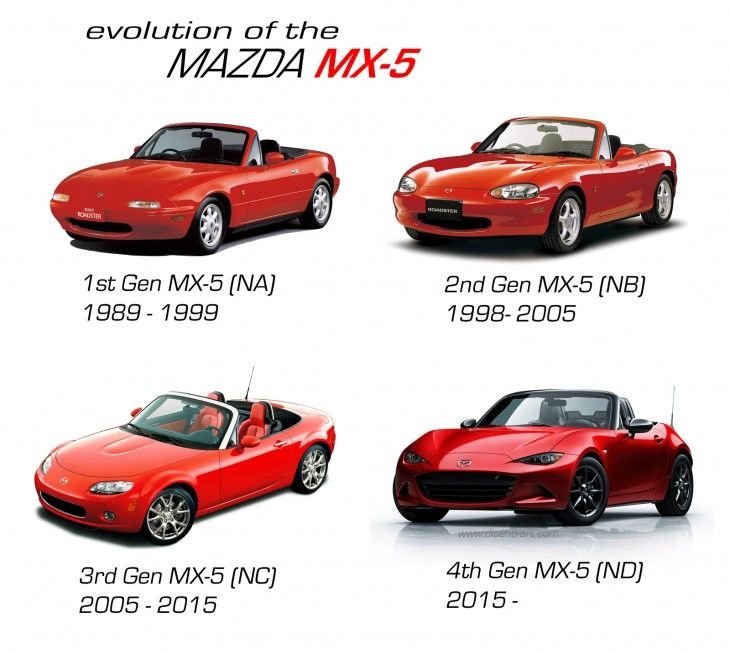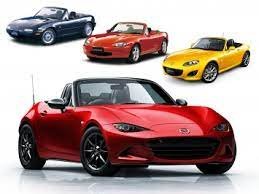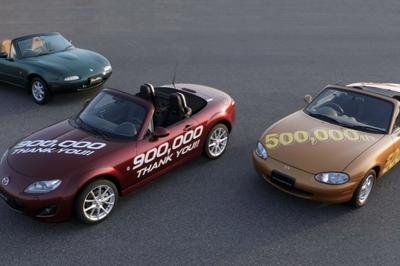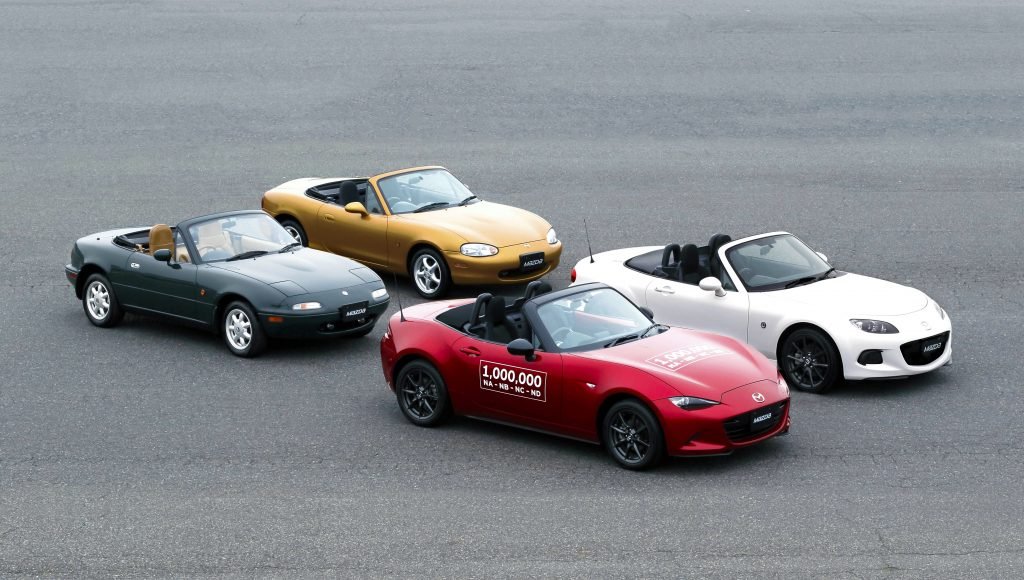MX-5 History
Lightweight sports cars first appeared in the years following the Second World War, but it wasn’t until the1960s that small, affordable and fun roadsters reached the height of their popularity. By fitting engines from standard cars into compact and light vehicle bodies, carmakers could provide exciting performance and agile handling that was also affordable. The lightweight sports car allowed average Europeans to enjoy exhilarating driving on a daily basis. Epitomised by the Lotus Elan and MG Midget.

In the early 1980s, with the lightweight sports car segment all but extinct because of the strictures of emissions and crash tests, Mazda’s engineers conceived a dream for a modern compact two-seater. One engineer, who would go on to lead the development of the first generation Mazda MX-5,was convinced that Mazda needed a unique product to help it stand out from the other Japanese brands, and passionately appealed to management to build a lightweight roadster.The agile handling and a linear driving feel that had made the original lightweight sports cars famous would be almost impossible to achieve without a RWD layout. For Mazda, this meant an entirely new powertrain would have to be developed, which would require a sizeable investment. In the end,despite the added cost, the engineers agreed that they had no choice but to pursue the ideals of a lightweight sports car.
Once the combination of RWD layout and an open-top body had been agreed on, the engineers coined the development concept, “Jinba Ittai” (which means“rider and horse as one”) to express the type of fun-to-drive roadster they
intended to build. “Jinba Ittai” continues to symbolize each new generation ofMX-5 and ensures that it will always remain true to Mazda’s original dream of a lightweight sports car.Mazda’s MX-5 roadster is not an imitation of the lightweight sports cars of the1960s. It is a purely Japanese car that was designed to achieve global appeal.
The development team focused on stripping off everything that was not necessary while maximizing the character of the vehicle. To control unnecessary weight gain, the engineers restrained their desire for greater engine output and more features. While pushing the limits of cost reductions,they were never hesitant to take bold engineering steps and break new ground in the name of “Jinba Ittai.”

Examples of this include the aluminum hood, which lowers the center of gravity and improves steering stability and accuracy.Also, a standard cast iron exhaust pipe was rejected in favour of a stainless steel version in order to achieve an ideal exhaust gas flow.It was clear from the start that this sports car was going to be different.
In order to ensure adequate feedback when changing gears, engineers created a “powerplant frame” to rigidly connect the transmission and differential. It significantly enhanced the performance feel and became an essential technical element in the evolution of the MX-5.
For the suspension system, the development team chose a double wish bone setup for all four wheels, due to its superior dynamic characteristics. Despite the extra complexity this involved, the engineers never thought of compromising in their pursuit of the best possible sports car. The suspension is another reflection of the engineers’ dedication to “Jinba Ittai.”
Captivating design is an essential element of a successful sports car. The design of the MX-5 was initiated at Mazda North America (MANA), a
development center located in California. In January 1986, it was decided that the R&D team in Japan would take over, and that summer the design base moved to Hiroshima with an almost-finished clay model.

Even at this stage, there were still doubts that the MX-5 would ever reach production. Some people still questioned the market potential of a lightweight sports car. To test this, a full-scale plastic body prototype was made from one of the design proposals and brought to the US in April 1987. Members of the public with an interest in cars were invited to preview the design. Of the 220participants, 57 responded that they “would definitely buy it if it hit the market.” With the US being the world’s largest automobile market, this result had a strong influence on the decision makers at Mazda.
Having successfully survived this early crisis, development continued and the design was finalized five months later. Two years after that, in spring 1989,Mazda’s compact roadster went on sale in the US, with sales in Japan commencing in September. Japan had been without an exciting car that could connect directly with the driver’s emotions for a long time, and the MX-5,known in Japan as the Eunos Roadster, surprised many people with its instant success.
The Mazda MX-5 achieved more than a boost to Mazda’s sales figures; it triggered a number of other automakers to produce their own open-top sportscars. As a result, it brought about a 1990s revival of the lightweight sports car that had disappeared at the end of the 1970s. TheMX-5 proved that lightweight sports cars can have a universal appeal. This achievement was made possible by the advancement of automotive technologies and the passion of Mazda’s engineers.

The Mazda MX-5 was born in the hearts of automotive engineers and brought to fruition through their aspirations. Beloved by drivers around the world since its debut, it was certified by Guinness World Records as the world’s highest production two-seat open top sports car in May 2000 (with 531,890 units produced between April 1989 and the end of October 1999). MX-5 sales continued to increase around the world, and Guinness updated the record when production passed 800,000 units in January 2007.
Even today, the “Jinba Ittai” spirit lives on in the fourth generation MX-5. The latest version of Mazda’s iconic roadster was born from the belief that “Only a very few sports cars possess the enduring spirit seen in the MX-5.” Man and machine in perfect balance.
